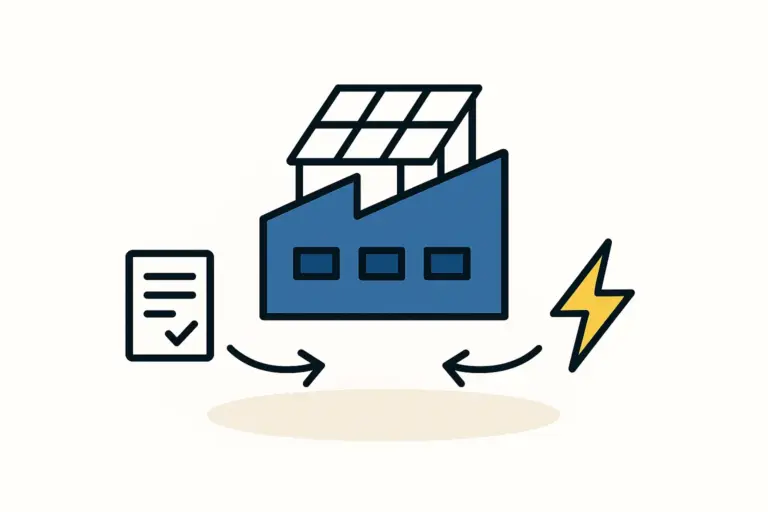For entrepreneurs and investors eyeing the solar industry, Algeria presents a compelling yet complex opportunity. The country boasts one of the world’s most significant solar resources, but harnessing this potential requires more than simply deploying standard technology. Conventional solar modules, designed for temperate European climates, often fail to deliver optimal performance or durability under the extreme conditions of the Sahara.
This creates a strategic opening for a specialized approach: local manufacturing of solar modules engineered specifically for high-irradiation desert environments. This guide outlines the technical and financial blueprint for establishing a production line for advanced bifacial modules, a technology poised to unlock superior returns on investment in the Algerian market.
Understanding Algeria’s Untapped Solar Market
Algeria’s solar energy potential is immense, with over 3,000 hours of annual sunshine and solar irradiation levels that can reach 2,650 kWh/m² per year in its southern regions. Recognizing this, the Algerian government has launched a ‘Solar Plan’ targeting the installation of 22 GW of renewable energy capacity by 2030, with 13.5 GW designated for photovoltaic (PV) power.
A critical component of this plan is a local content requirement, mandating that a significant portion of the technology used in government-supported solar projects must be produced domestically. This policy directly incentivizes local solar module manufacturing facilities, creating a protected market for investors who can meet the country’s specific technological needs.
The Performance Gap: Why Standard Modules Underperform in Desert Climates
An investor’s primary concern is the long-term performance and bankability of their assets. Standard solar modules, while effective in moderate climates, face several performance-degrading challenges in a desert environment like Algeria’s:
-
High Ambient Temperatures: Solar cell efficiency decreases as temperature rises. Prolonged exposure to high heat and UV radiation also accelerates degradation mechanisms like Light Induced Degradation (LID) and Light and elevated Temperature Induced Degradation (LeTID), permanently reducing a module’s power output.
-
UV Radiation Damage: Many standard modules use an EVA (Ethylene Vinyl Acetate) encapsulant to laminate the solar cells. Under the intense, prolonged UV exposure typical of the Sahara, EVA is prone to yellowing. This discoloration reduces the amount of light reaching the cells, which in turn lowers energy production.
-
Sand Abrasion and Soiling: Wind-blown sand can cause microscopic abrasions on the module surface, scattering sunlight and reducing efficiency. The accumulation of dust and sand (soiling) blocks sunlight and requires frequent, costly cleaning operations to maintain performance.
These combined factors mean that a standard solar module may never achieve its nameplate power rating in real-world Algerian conditions, leading to lower-than-expected energy yields and a diminished return on investment.
The Strategic Advantage of Bifacial Technology
Bifacial solar modules offer a direct solution to maximizing energy harvest in high-irradiation environments. Unlike traditional monofacial modules that capture light only from the front, bifacial modules are designed with transparent backsheets or back glass, allowing them to capture sunlight reflected off the ground.
This effect is particularly pronounced in desert locations, where the light-colored sand of the Sahara has a high albedo (the measure of its reflectivity), reflecting a significant amount of sunlight. A bifacial module captures this reflected light, generating additional energy. This ‘bifacial gain’ can increase a module’s total energy output by 10% to 25% compared to a monofacial counterpart under the same conditions, directly boosting a solar power plant’s revenue.

The DESERT+ Specification: Engineering for High-Irradiation Environments
To fully capitalize on the benefits of bifacial technology and mitigate harsh environmental challenges, a specialized module design is required. The DESERT+ specification, developed from J.v.G. Technology GmbH’s experience in designing production lines for challenging climates, integrates several key technologies into a single, robust module.
Key components of a DESERT+ module include:
-
Glass-Glass Structure: Instead of a conventional glass-and-plastic-backsheet design, this structure uses a second pane of glass on the rear side. This provides superior mechanical stability and protects the solar cells from moisture, sand abrasion, and humidity-induced degradation, extending the module’s operational lifetime to 30 years or more.
-
POE Encapsulant: In place of EVA, Polyolefin Elastomer (POE) is used. POE is inherently resistant to UV radiation and does not yellow over time. It also has a lower water vapor transmission rate, which further protects the cells from moisture and helps prevent long-term delamination.
-
Advanced Cell Technology (TOPCon/HJT): These newer cell architectures exhibit a better temperature coefficient, meaning they lose less power at the high operating temperatures common in Algeria. This results in higher energy yields throughout the hottest parts of the day.
-
Anti-Reflective & Anti-Soiling Coatings: A special coating on the front glass reduces reflection, allowing more light to enter the module. Its hydrophobic properties also make it harder for dust to adhere to the surface and simplify cleaning, reducing operational costs.

Analyzing the Financial Blueprint: ROI and Long-Term Value
Establishing a turnkey production line capable of manufacturing DESERT+ modules requires a higher initial capital expenditure—typically 15% to 20% more than a line for standard modules. This increased investment, however, delivers a far superior long-term financial outcome.
A comprehensive business plan for a solar panel factory must analyze the entire lifetime value of the product. The financial advantages of DESERT+ modules are clear:
-
Higher Lifetime Energy Yield: The combination of bifacial gain, superior temperature performance, and minimal degradation ensures significantly more electricity is produced over the asset’s life.
-
Lower Levelized Cost of Energy (LCOE): By generating more energy for a longer duration from a slightly higher initial investment, the module significantly lowers the Levelized Cost of Energy (LCOE). This makes power plants using these modules more financially competitive and attractive for project financing.
-
Enhanced Bankability and Durability: The robust glass-glass design and 30+ year lifespan increase the asset’s value and make it a more secure investment for financial institutions.
The analysis shows that while the initial outlay is greater, the faster payback period and higher overall profitability make the DESERT+ production line a more strategic and resilient business venture.
Frequently Asked Questions (FAQ)
What is the primary benefit of glass-glass modules in a desert?
The primary benefit is long-term durability. The rear glass protects solar cells from mechanical stress, sand abrasion, and moisture ingress far more effectively than a plastic backsheet. This leads to lower degradation rates and a longer productive lifespan, securing the investment for 30 years or more.
Is a DESERT+ production line significantly more complex to operate?
The core manufacturing processes are similar to standard module production. However, handling glass-glass modules and working with POE encapsulants requires specific machinery and process parameters. A properly designed turnkey line from an experienced provider accounts for these differences, ensuring the operational complexity is well-managed.
How does local content policy in Algeria affect this investment?
The policy creates a prioritized market for locally produced modules. By manufacturing a product specifically optimized for Algeria’s climate, a producer can establish a position as a premium supplier for large-scale government and private-sector solar projects, securing a stable source of demand.
What is a realistic timeline for establishing such a factory?
With a structured approach and an experienced technology partner, a 50-100 MW production line can typically be planned, built, commissioned, and become operational within 12 to 18 months.

Conclusion: Building a Future-Proof Solar Manufacturing Operation
The opportunity in Algeria is not merely to produce solar panels, but to produce the right solar panels. By investing in a manufacturing line for bifacial DESERT+ modules, an entrepreneur can deliver a technologically superior product that directly addresses the market’s primary challenges. This approach moves beyond competing on price alone and establishes a business based on performance, durability, and long-term value. For investors looking to build a resilient and profitable enterprise, this specialized blueprint offers the most strategic path to success in Algeria’s growing solar industry.






